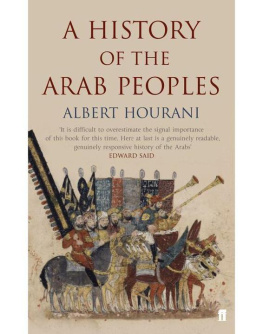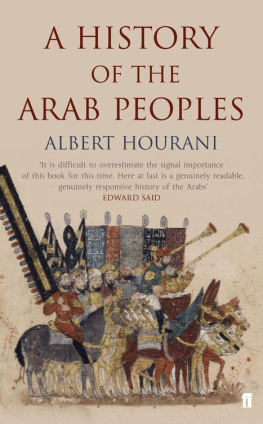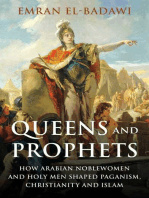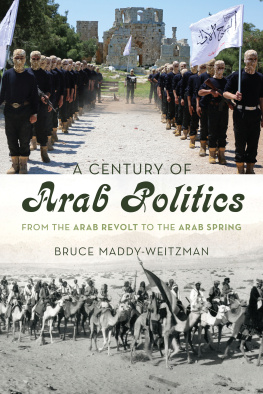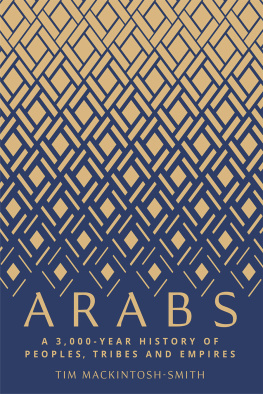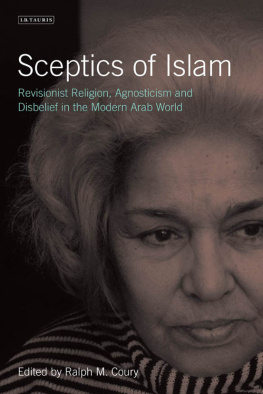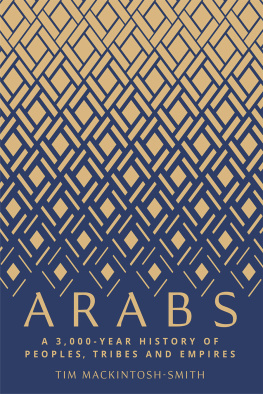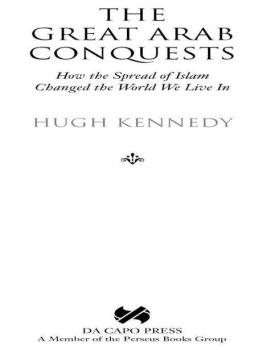Albert Hourani - History of the Arab Peoples
Here you can read online Albert Hourani - History of the Arab Peoples full text of the book (entire story) in english for free. Download pdf and epub, get meaning, cover and reviews about this ebook. year: 2005, publisher: Faber & Faber, Limited, genre: Religion. Description of the work, (preface) as well as reviews are available. Best literature library LitArk.com created for fans of good reading and offers a wide selection of genres:
Romance novel
Science fiction
Adventure
Detective
Science
History
Home and family
Prose
Art
Politics
Computer
Non-fiction
Religion
Business
Children
Humor
Choose a favorite category and find really read worthwhile books. Enjoy immersion in the world of imagination, feel the emotions of the characters or learn something new for yourself, make an fascinating discovery.
- Book:History of the Arab Peoples
- Author:
- Publisher:Faber & Faber, Limited
- Genre:
- Year:2005
- Rating:5 / 5
- Favourites:Add to favourites
- Your mark:
- 100
- 1
- 2
- 3
- 4
- 5
History of the Arab Peoples: summary, description and annotation
We offer to read an annotation, description, summary or preface (depends on what the author of the book "History of the Arab Peoples" wrote himself). If you haven't found the necessary information about the book — write in the comments, we will try to find it.
History of the Arab Peoples — read online for free the complete book (whole text) full work
Below is the text of the book, divided by pages. System saving the place of the last page read, allows you to conveniently read the book "History of the Arab Peoples" online for free, without having to search again every time where you left off. Put a bookmark, and you can go to the page where you finished reading at any time.
Font size:
Interval:
Bookmark:
A HISTORY OF THE ARAB PEOPLES
Albert Hourani

St Antonys College, Oxford
Contents
The subject of this book is the history of the Arabic-speaking parts of the Islamic world, from the rise of Islam until the present day. During some periods, however, I have had to go beyond the subject: for example, when I consider the early history of the caliphate, the Ottoman Empire, and the expansion of European trade and empire. It would be possible to argue that the subject is too large or too small: that the history of the Maghrib is different from that of the Middle East, or that the history of the countries where Arabic is the main language cannot be seen in isolation from that of other Muslim countries. A line has to be drawn somewhere, however, and this is where I have chosen to draw it, partly because of the limits of my own knowledge. I hope the book will show that there is sufficient unity of historical experience between the different regions it covers to make it possible to think and write about them in a single framework.
The book is intended for students who are beginning to study the subject and for general readers who wish to learn something about it. It will be clear to specialists that, in a book with so large a scope, much of what I say is based upon the research of others. I have tried to give the essential facts and to interpret them in the light of what others have written. Some of my debts to their work are indicated in the bibliography.
Writing a book which covers such a long period, I have had to make decisions about names. I have used the names of modern countries to indicate geographical regions, even when those names were not used in the past; it seemed simpler to use the same names throughout the book, rather than change them from period to period. Thus Algeria is used for a certain region in North Africa, even though the name came into use only in modern centuries. In general, I have used names which will be familiar to those who read mainly in English; the word Maghrib is probably familiar enough to be used rather than North-west Africa, but Mashriq is not and so I have used Middle East instead. I have called the Muslim parts of the Iberian peninsula Andalus, because it is simpler to use one word than a phrase. When I use a name which is now that of a sovereign state in writing about a period before that state came into existence, I employ it to refer to a certain region roughly defined; it is only when I write of the modern period that I intend it to refer to the area included within the frontiers of the state. For example, throughout most of the book Syria refers to a certain region which has common features, both physical and social, and on the whole has had a single historical experience, but I use it only to refer to the state of Syria once it has come into existence after the First World War. I need scarcely say that such uses do not imply any political judgement about which states should exist and where their frontiers lie.
The main geographical names used are shown in Map 1.
I should like to thank Patrick Seale, who encouraged me to write this book and arranged for it to be published, and the friends who gave many hours to reading it, correcting mistakes and suggesting how it could be improved: Patricia Crone, Paul Dresch, Leila Fawaz, Cornell Fleischer, the late and much lamented Martin Hinds, Charles Issawi, Tarif Khalidi, Philip Khoury, Ira Lapidus, Wilferd Madelung, Basim Musallam, Robin Ostle, Roger Owen, Michael Rogers and Mary Wilson. Among them I owe a special debt to Paul Dresch, who followed my line of thought with remarkable insight as well as wide knowledge.
Other friends and colleagues provided me with information I needed, among them Julian Baldick, Karl Barbir, Tourkhan Gandjei, Israel Gershoni and Venetia Porter.
I am most grateful to Elizabeth Bullock, who typed successive drafts with devotion and skill, to my editors at Faber and Faber, Will Sulkin and John Bodley, to John Flower who drew the maps, Brenda Thomson who copy-edited a difficult manuscript in a sensitive and intelligent way, Bryan Abraham who corrected the proofs with scrupulous care, and Hilary Bird who made the index.
Some of the translations from Arabic are my own, some are made by other translators, others again have been adapted by me from translations already existing. I must thank the following publishers for giving me permission to use translations or extracts from books:
Cambridge University Press for translations from A. J. Arberry, Arabic Poetry (1965) and Poems of al-Mutanabbi (1967), and from John A. Williams, Al-Tabari: the Early Abbasid Empire , Vol. 1 (1988).
Columbia University Press for lines from a poem by Badr Shakir al-Sayyab, translated by Christopher Middleton and Lena Jayyusi in Salma Khadra Jayyusi, ed. Modern Arabic Poetry , copyright Columbia University Press, New York (5987).
Edinburgh University Press for a passage from George Makdisi, The Rise of Colleges (1981).
Quartet Books for a passage from Alifa Rifaat, Distant View of a Minaret , translated by Denys Johnston-Davies (1983).
State University of New York Press for a passage from The History of al-Tabari , general editor E. Yar-Shater: Vol. 27, The Abbasid Revolution , translated by J. A. Williams, copyright State University of New York (1985).
Unwin Hyman Limited for quotations from A. J. Arberry, The Koran Interpreted , copyright George Allen and Unwin Limited (1955).
Wayne State University Press for a translation from J. Lassner, The Topography of Baghdad in the Early Middle Ages (1970).
Words or names which have a familiar English form are used in that form. For transliteration of other Arabic words or names I have used a simple system based upon that of the International Journal of Middle East Studies:
no diacritical marks are used;
the letter ayn is indicated by, and hamza is indicated by, but only when it comes in the middle of a word (in pronouncing words, those who are not concerned with their Arabic form can ignore both these signs);
for plurals of words I have added an s , except for the plural of alim, which is given as ulama;
doubled vowels in the middle of a word are indicated by -iyya or -uwwa;
diphthongs are indicated by -aw or -ay ;
al-is prefixed the first time an Arabic name is used, but omitted later (e.g. al-Ghazali, Ghazali);
Turkish names and words are normally spelled in their modern Turkish form.
From early Islamic times, Muslims have dated events from the day of Muhammads emigration from Mecca to Madina in AD 622: this emigration is known in Arabic as the hijra , and the usual way of referring to Muslim years in European languages is by the use of the initials AH .
A year according to the Muslim calendar is not of the same length as a year according to the Christian calendar. The latter is measured by a complete revolution of the earth around the sun, which takes approximately 365 days, but the former consists of twelve months each of which corresponds to a complete revolution of the moon around the earth; the length of a year measured in these terms is approximately 11 days less than that of a solar year.
Information about ways of converting Muslim into Christian dates, or vice versa, can be found in G. S. P. Freeman-Grenville, The Muslim and Christian Calendars (London, 1977).
Christian era dates are used, except when the context makes it important to indicate the Muslim date or century.
For rulers, dates of accession and death (or deposition) are given; for other persons, dates of death and birth. When the date of birth is not known, that of death alone is given (e.g. d. 1456); when the person is still alive, only the date of birth is given (e.g. b. 1905). When the date is known only approximately, c . is used (e.g. c. 130758).
Next pageFont size:
Interval:
Bookmark:
Similar books «History of the Arab Peoples»
Look at similar books to History of the Arab Peoples. We have selected literature similar in name and meaning in the hope of providing readers with more options to find new, interesting, not yet read works.
Discussion, reviews of the book History of the Arab Peoples and just readers' own opinions. Leave your comments, write what you think about the work, its meaning or the main characters. Specify what exactly you liked and what you didn't like, and why you think so.

